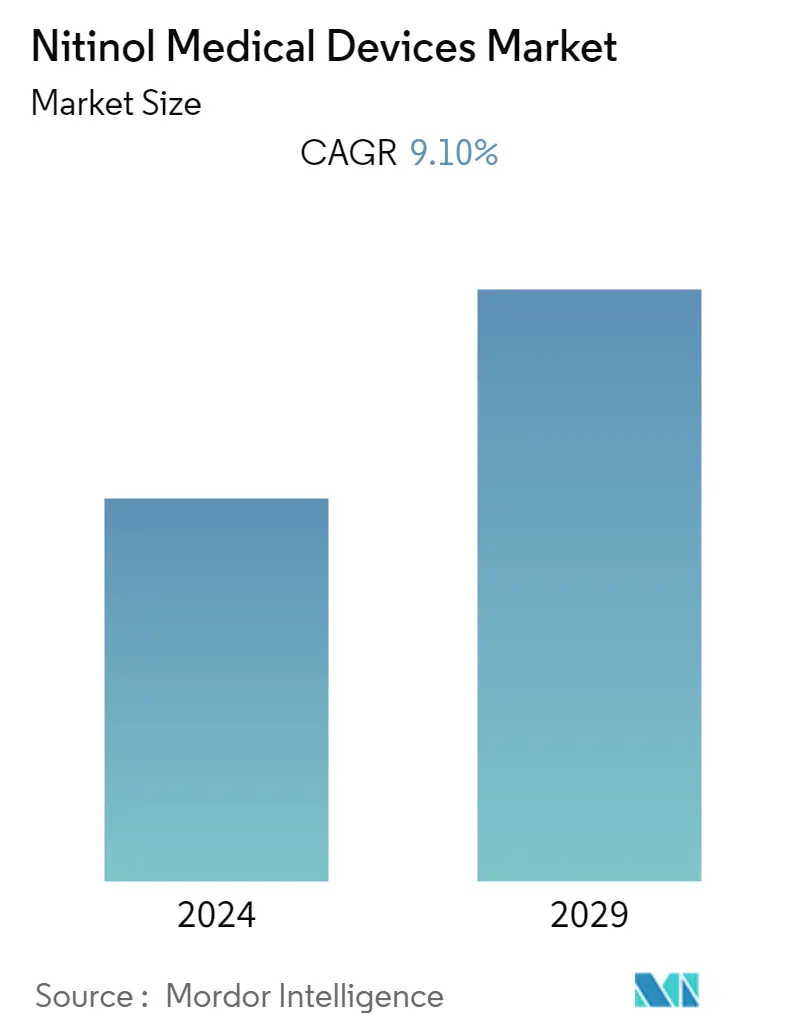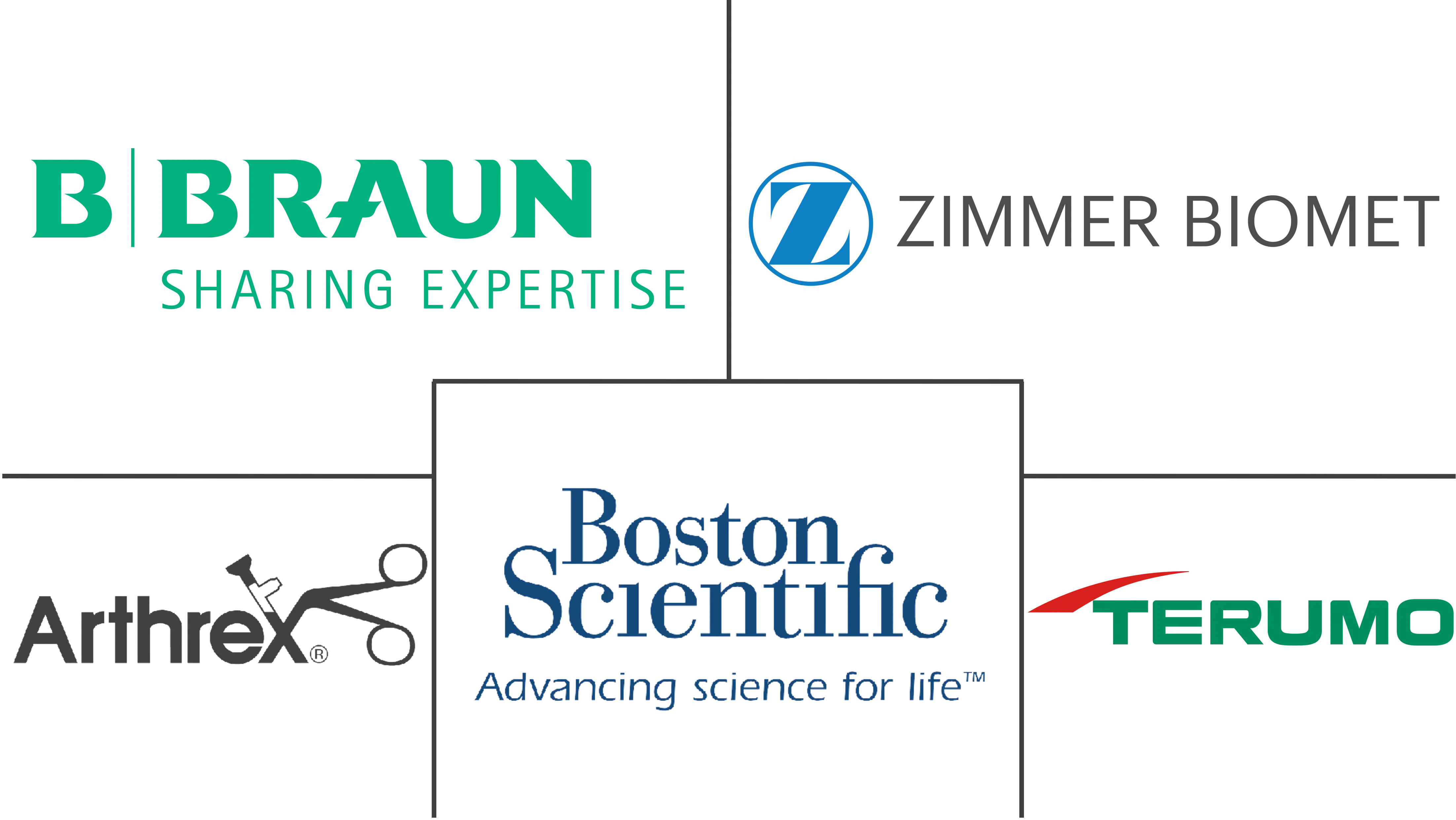Market Size of Nitinol Medical Devices Industry

| Study Period | 2019 - 2029 |
| Base Year For Estimation | 2023 |
| Forecast Data Period | 2024 - 2029 |
| CAGR | 9.10 % |
| Fastest Growing Market | Asia-Pacific |
| Largest Market | North America |
Major Players
*Disclaimer: Major Players sorted in no particular order |
Need a report that reflects how COVID-19 has impacted this market and its growth?
Nitinol Medical Devices Market Analysis
Over the next few years, the market for medical devices made of nitinol is expected to grow at a CAGR of 9.1%.
The COVID-19 pandemic resulted in postponements and cancellations of non-essential and elective procedures such as dental procedures and orthopedic surgeries, which witnessed a significant decline in the number of surgeries during the pandemic. For instance, in 2021, an article published by Linguistic and Culture Review reported that medical device supply chains hit by the global pandemic are under unprecedented pressure as sharply fluctuating demand triggers widespread shortages of medical devices. The worldwide medical devices market, including nitinol medical devices, has been affected by the pandemic. However, as the pandemic has subsided currently, the market is expected to have stable growth in the forecast period of the study.
The factors that are driving the market are the growing burden of chronic diseases and the rising preference for minimally invasive surgeries. Cardiovascular disease (CVD) is highly prevalent in developed and developing countries. It is among the largest contributors to overall deaths in the world. For instance, in 2021, WHO reported that an estimated 17.9 million people died from cardiovascular disease (CVD) annually, representing 32% of all global deaths. Of these deaths, 85% were due to heart attacks and strokes. In addition, procedures such as angioplasty that place balloons or stents in the blood vessels have allowed the use of nitinol medical devices. Most of the stents, grafts, and balloons are made from nitinol. Also, the guiding guidewires and catheters used during the procedures are widely made from nitinol.
Another driving factor for this market is the rising preference for minimally invasive surgeries for cardiovascular disease (CVD), which is highly prevalent in developed and developing countries. The advantages of minimally invasive surgeries (MIS), such as smaller incisions, reduced pain, fewer complications, minimal blood loss, and shorter hospital stays, have dramatically influenced the adoption of minimally invasive surgeries (MIS). The growing popularity of minimally invasive surgeries (MIS) is largely due to the benefits of MIS, and it has also contributed to the growth of nitinol medical devices, particularly for robotic surgeries and laparoscopic procedures.
Due to the above-mentioned reasons, such as the growing burden of chronic diseases and the rising preference for minimally invasive surgeries, and the fact that cardiovascular disease (CVD) is highly prevalent in both developed and developing countries, the market is expected to show significant growth over the forecast period; however, the high cost of devices and the presence of alternative devices may slow down the growth of the market.
